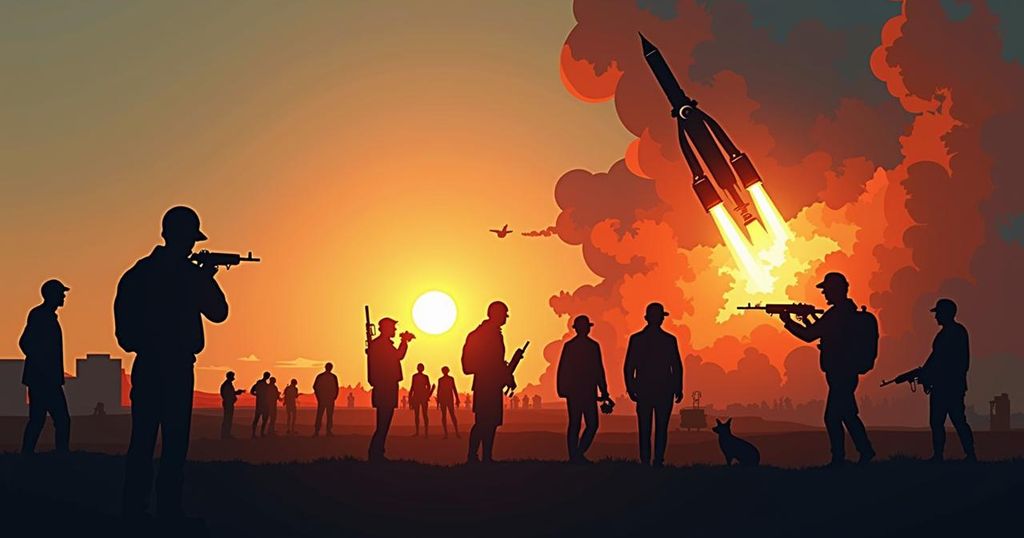Recent missile strikes from Iran towards Israel represent a critical escalation in Middle Eastern tensions that began following Hamas’s initial attacks on Israel in October 2023. This conflict has expanded amidst a series of retaliatory strikes between Israel and Iranian proxies, with key events marking significant loss of life and humanitarian crises, prompting international concerns about a broader regional conflict. The dynamics of U.S. foreign policy and accountability are also significant factors in this ongoing crisis.
The recent missile attacks from Iran towards Israel mark a significant escalation in the ongoing conflict between the two nations. This rise in tensions stems from a series of provocative actions and reactions over the past year, particularly following the onset of hostilities in Gaza. On October 8, 2023, shortly after the initial Hamas-led attacks on Israel that resulted in substantial loss of life, Hezbollah began cross-border fire directed at Israeli military installations, declaring their solidarity with the Palestinian struggle. Subsequently, Israel retaliated with airstrikes, which escalated retaliatory violence between Israeli forces and Hezbollah, leading to increased casualties and displacement among the civilian population in Lebanon. On April 1, 2024, Israel’s missile assault on the Iranian consulate in Syria claimed the lives of several high-ranking Iranian military officials, igniting a pledge from Iran for revenge. Following this, on April 13, Iran launched its first direct missile strike aimed at Israel, although Israeli defenses managed to intercept most projectiles. Tensions continued to rise with the assassination of prominent Hamas leader Ismail Haniyeh in July 2024 and Israel’s subsequent airstrikes in Lebanon that resulted in widespread devastation and loss of innocent life. By late September, over 700 people in Lebanon had died from Israeli airstrikes targeting Hezbollah, marking a critical turning point in hostilities. Statements from experts emphasize that the U.S. response and its failure to hold Israel accountably for its military strategies have intensified the conflict. Comments from Trita Parsi and Denijal Jegic suggest that the lack of proactive peace efforts has turned a regional crisis into a grave humanitarian disaster.
The ongoing conflict between Israel and Iran is deeply rooted in historical grievances and geopolitical tensions that have escalated dramatically over the last year. The situation was exacerbated following the Hamas attacks on October 7, 2023, which killed numerous Israelis and prompted Israel’s relentless military response against both Hamas and other Iranian-backed proxies like Hezbollah. The regional response was significant, leading to Iran’s direct involvement in the hostilities through missile launches and orchestrated support against Israel. The conflict not only highlights the complex dynamics of Middle Eastern politics but also underscores international implications, particularly concerning U.S. foreign policy and its perceived complicity in the violence.
The recent timeline of events leading to Iran’s missile barrage against Israel illustrates a perilous escalation of conflict driven heavily by retaliatory violence and political dynamics within the region. The cycle of attacks and counterattacks raises fears of a broader regional war that could have severe implications for international peace, requiring urgent diplomatic intervention. Observers argue that the U.S.’s failure to effectively address or curb Israeli aggression has contributed to a volatile situation, where the grievances of regional actors like Iran are poised against the backdrop of their own military responses.
Original Source: www.aljazeera.com







